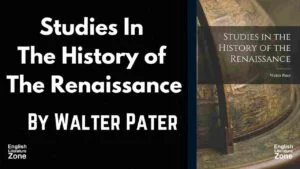
“Grimm’s Law” is discovered by the great German linguist Jacob Grimm, who was a Philo gist, jurist, and folklorist. His full name was Jacob Ludwing Karl Grimm.”
Grimm’s Law
It shows the systematic relation between consonants in other Indo-European languages stating what phonetic changes took place. It also shows that changes in a language and groups of languages come about gradually and not as a result of random word changes. This change was first formulated as a law by one German philologist named Jacob Grimm in 1822. The law formula led by Grimm has been named after him and is hence familiarly known in the History of English as ‘Grimm’s Law.’
Grimm discovered certain correspondences between some consonant sounds occurring in the words of classical languages like Sanskrit Latin and Greek and those of Teutonic languages like English and Gothic. Grimm stated that there is the regular shifting of a particular series of Indo-Germanic consonant sounds in Teutonic. To illustrate these sound shifting we can take words from the classical language like Sanskrit, Latin, and Greek as representative of the Indo-European consonant system that is best preserved in these languages. Words from old English modern English or Gothic may be taken to represent the Teutonic Sound.
On the basis of change, we can divide it into three parts
- Indo-European voiced aspirated stop sounds ‘bh’, ‘gh’, and ‘dh’, become shifted in Teutonic to corresponding voiced stop sounds ‘b’, ‘g’, and ‘d’ that means:-
- Indo-European voiced aspirated stops sounds ‘bh’ becomes Teutonic ‘b’.
Example –
| Indo-European (Sanskrit) | Modern English (Teutonic) |
| Bharata | Brother |
- Again Indo European ‘gh’ becomes Teutonic ‘g’
Example –
| Indo-European (Sanskrit) | Modern English (Teutonic) |
| Stigh | Stig |
- Again Indo European ‘dh’ becomes Teutonic ‘d’
Example –
| Indo-European (Sanskrit) | Modern English (Teutonic) |
| Madhya | Middle |
- The Indo-European voice stop sounds ‘b’, ‘d’, and ‘g’ are shifted in Teutonic to the corresponding voiceless sounds ‘p’, ‘t’, and ‘k’ that means: –
- Indo-European ‘b’ becomes Teutonic ‘p’
Example-
| Indo-European | Gothic |
| Lurbricus | Sliupan |
Indo-European‘ d’ becomes Teutonic ‘t’
Example –
| Sanskrit | English |
| Svadu | Sweet |
Again Indo-European ‘g’ becomes Teutonic ‘k’
Example –
| Latin | Gothic | Modern English |
| Gelu | Kalds | Cold |
- Indo-European voiceless stops sounds ‘p’, ‘t’, and ‘k’ become shifted in Teutonic to the corresponding voiceless open sounds ‘f’, ‘th’, and ‘h’
- Indo-European ‘p’ becomes Teutonic ‘f’
Example –
| Sanskrit | English |
| Pita | Father |
| Pancha | Five |
- Indo-European‘ t’ becomes Teutonic ‘th’
Example –
| Sanskrit | English |
| Pita | Father |
Another example –
| Latin | English |
| Tres | Three |
Indo-European ‘k’ becomes Teutonic ‘h’
Example –
| Latin | English |
| Canis | Hand |
Grimm’s Law, however, did not operate under certain circumstances.
If Indo-European ‘p’ or ‘k’ happened to be followed by ‘t’ the ‘t’ remained unchanged so that from the combination of ‘pt’, and ‘kt’ we have in Teutonic ‘ft’, and ‘ht’. Again by an ‘s’ in Indo-European, the combinations remained unchanged in Teutonic.
Example –
| Sanskrit | Old English |
| Stigh | Stingh |
These shifts are not random but follow a consistent pattern across the Germanic language family, affecting the initial consonants of words and leading to the distinct sounds we recognize in languages such as English, German, Dutch, and the Scandinavian languages.
The significance of Grimm’s Law lies in its demonstration that sound change follows specific patterns, challenging the previously held belief that such changes were sporadic and unpredictable. The discovery of these patterns has provided linguists with a framework for understanding the historical development of languages and tracing their ancestral roots.
Grimm’s Law also paved the way for further linguistic research, including Verner’s Law, which addressed exceptions to Grimm’s Law by explaining variations due to accentual patterns in Proto-Germanic languages. Together, these laws offer a fascinating glimpse into the mechanisms of language change and the interconnectedness of the Indo-European language family.
Conclusion
Grimm’s Law serves as a crucial piece of the puzzle in unravelling the history of the Germanic languages. It showcases the intricate process of language evolution and the profound impact of phonetic shifts on the development of modern languages. As we continue to study and appreciate the complexities of linguistic change, Grimm’s Law remains a fundamental concept that highlights the systematic nature of language and its capacity for transformation over time.
Thus, we see that after the formulation of Grimm’s law, it was found that there were certain apparent exceptions to it. In a pair of words like Latin ‘Centum’ and hundreds the correspondence between the ‘c’ (k) and ‘h’ was according to Grimm’s Law – but, there was no such correspondence between the ‘t’ of certain and ‘d’ of hundred.
- Mechanical Reproduction By Walter Benjamin | The Work of Art in the Age of Mechanical Reproduction
- The Interpretation of Dreams By Sigmund Freud
- Victorian Period | Victorian Literature and Culture
- Dear Life by Alice Munro Summary, Themes, & Analysis
- The Lotos-eaters by Alfred Lord Tennyson
- Studies in the History of the Renaissance
- The Prologue to The Canterbury Tales By Geoffrey Chaucer
- Hayavadana By Girish Karnad | Hayavadana Themes & Analysis
- The Bluest Eye By Toni Morrison | The Bluest Eye Summary
- Top Girls By Caryl Churchill | Top Girls Analysis














